Table of Contents
Overview – Nutrition Basics
Understanding nutrition basics is fundamental to health, providing the energy and building blocks needed for cellular maintenance, growth, and performance. Optimal nutrition occurs when dietary intake matches physiological requirements. Beyond macronutrients and vitamins, food also stimulates gastrointestinal “exercise,” reinforcing gut health. This article outlines nutritional needs, energy balance, deficiency syndromes, and clinical tools used in assessing nutritional status.
Dietary Requirements and Energy Balance
Requirements = Supply
- Maintenance: Supports basal metabolic rate (BMR)
- Performance: Supports physical activity, cognition, and digestion
- Nutrition also maintains GI tract motility and mucosal health
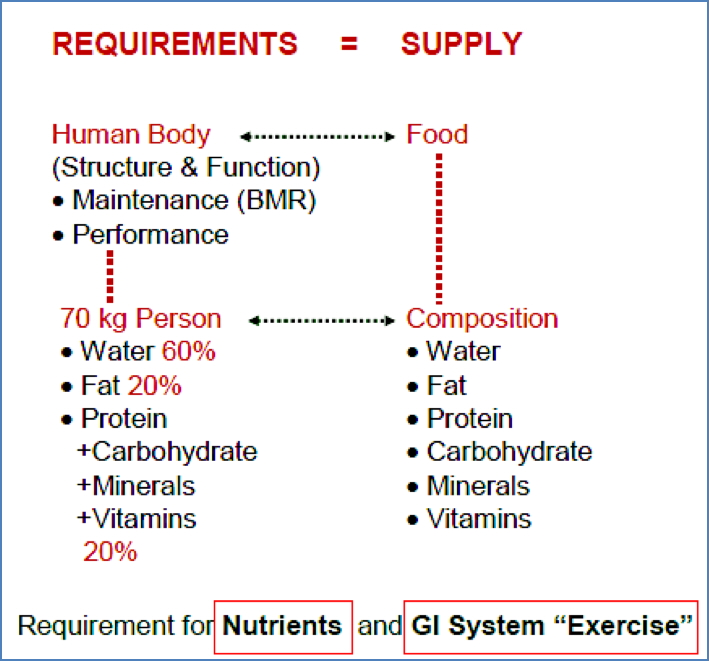
Routes of Nutritional Administration
- Oral: Self-feeding
- Enteral: Via nasogastric or jejunal tube
- Parenteral: IV nutrition (e.g., subclavian vein)
Energy Expenditure
Basal Metabolic Rate (BMR)
- Energy required for:
- Lying down, complete rest
- Thermo-neutral environment
- Post-absorptive state (no digestion occurring)
Measuring Energy
- Joule (J): SI unit
- 1 calorie = 4.184 J
- Expressed as:
- kJ/g of dry matter (DM)
- MJ/kg of DM
Yield by Macronutrients
- Carbohydrates: 16 kJ/g → ~55–60% of diet
- Proteins: 17 kJ/g → ~15% of diet
- Fats: 37 kJ/g → ~30% of diet
Energy Terms
- Gross Energy (GE): Total energy in food
- Digestible Energy (DE): GE – energy lost in faeces
- Metabolisable Energy (ME): GE – faeces – urine – methane
- Net Energy (NE): ME – heat loss
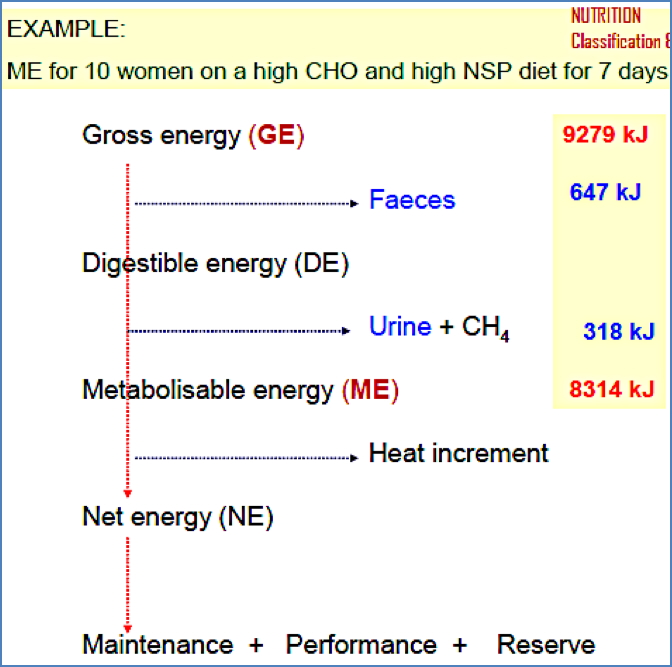
Macronutrients
Carbohydrates
- Main energy source
- Include dietary fibre for bowel health
- Glycaemic Index (GI):
- High GI: rapid energy spikes
- Low GI: sustained release
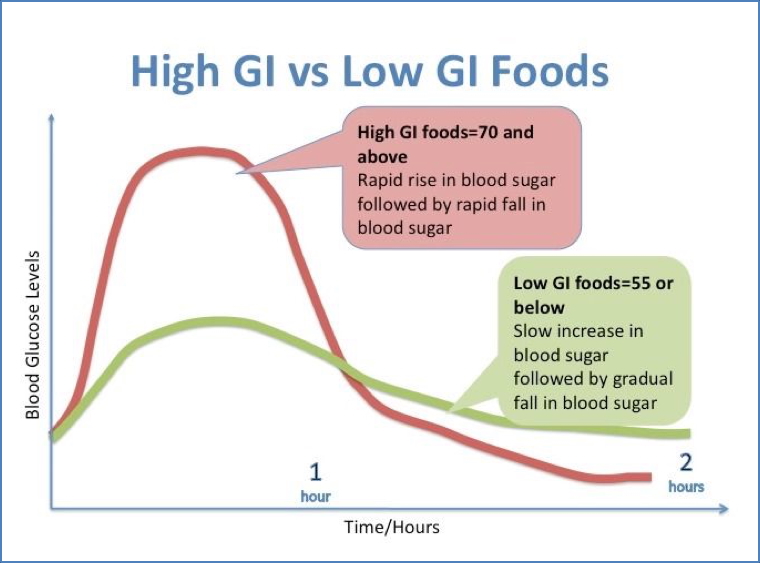

2. https://www.magickitchen.com/info/lgi-foods-help-control-blood-sugar.html
Proteins
- Essential amino acids (9):
- Histidine, isoleucine, leucine, lysine, methionine, phenylalanine, threonine, tryptophan, valine
Fats
- Cannot be eliminated entirely
- Essential Fatty Acids:
- Linoleic acid (ω-6) → Arachidonic acid
- α-Linolenic acid (ω-3) → EPA, DHA
- Fat-soluble vitamins: A, D, E, K
Micronutrients
Vitamins
- Water-soluble: B12, Biotin, Vitamin C
- Fat-soluble: A, D, E, K
Minerals
- Include iron, calcium, magnesium, zinc, and more
- Key roles in haemoglobin, bone health, immunity

Nutritional Deficiencies
Types of Malnutrition
- Primary deficiency: Inadequate intake
- Secondary deficiency: Impaired absorption, processing, or utilisation
Progression
- Decline in nutrient stores
- Altered physiological function
- Clinical signs/symptoms
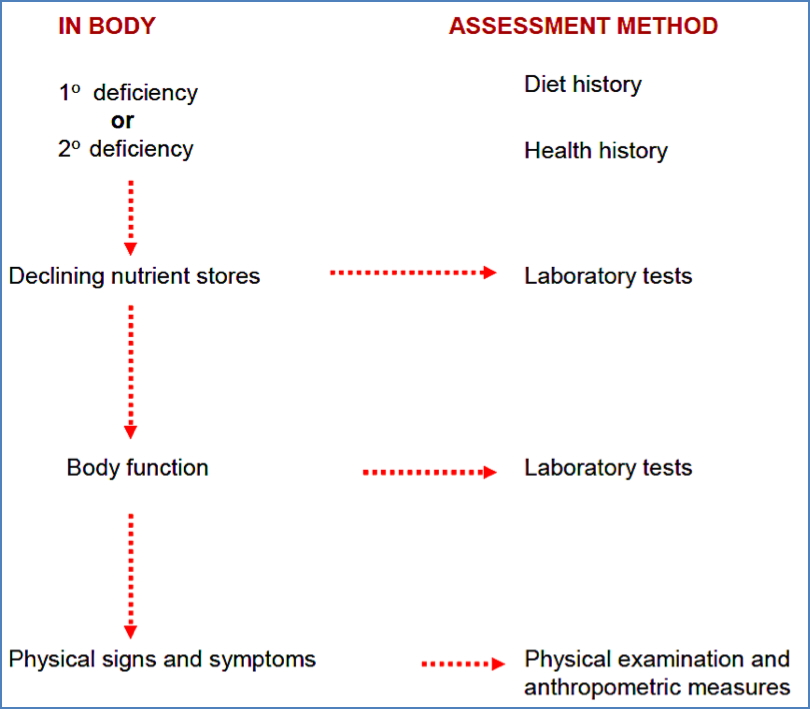
Assessing Nutritional Status
Historical Data
- Food diary, 24-hour recall, diet history, frequency questionnaires
Biochemical Markers
Protein-Energy Malnutrition
- Serum proteins:
- Albumin, transferrin, transthyretin, RBP
- Total body protein:
- Nitrogen balance
- Urinary creatinine
- Urea

Fat Malnutrition
- Lipid profiles:
- Chylomicrons, VLDL, LDL, HDL
Glucose Malnutrition
- Blood and urinary glucose
- HbA1c: Reflects 120-day glucose control
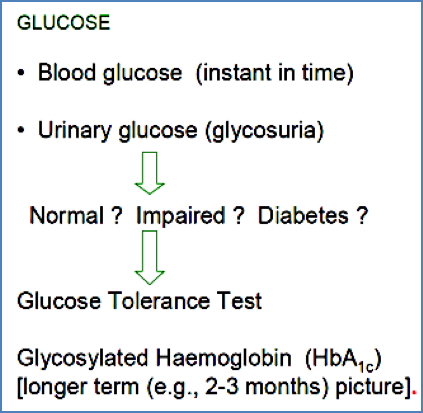
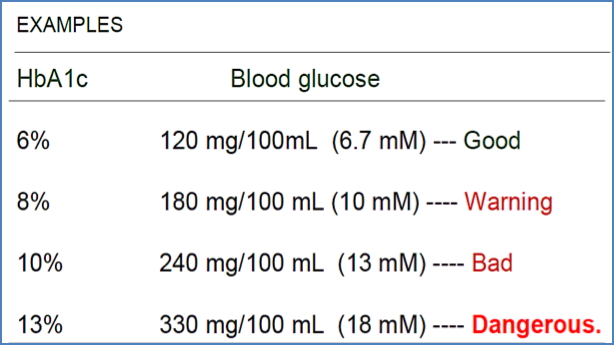
Vitamin/Mineral Deficiency
- Iron: Hb, haematocrit, ferritin, transferrin saturation
- Folate: Serum folate, MCV
- Vitamin B12: Serum B12, Schilling test
Anthropometric Assessments
Physical Measures
- Growth charts
- Skinfold thickness
- BMI = kg/m²:
- <18.5 = underweight
- 18.5–24.9 = normal
- 25–29.9 = overweight
- ≥30 = obese
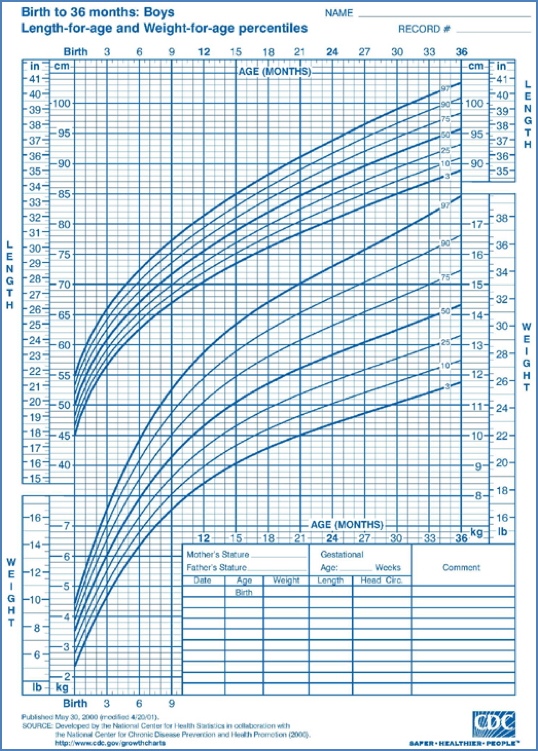

Waist-to-Hip Ratio
- Men: <0.8
- Women: <0.9
Summary – Nutrition Basics
Nutrition underpins all physiological functions, from cellular metabolism to immune responses. Macronutrients and micronutrients must be balanced to meet energy and biosynthetic demands. Assessing nutritional status requires biochemical, anthropometric, and dietary evaluation. For a broader context, see our Gastrointestinal Overview page.